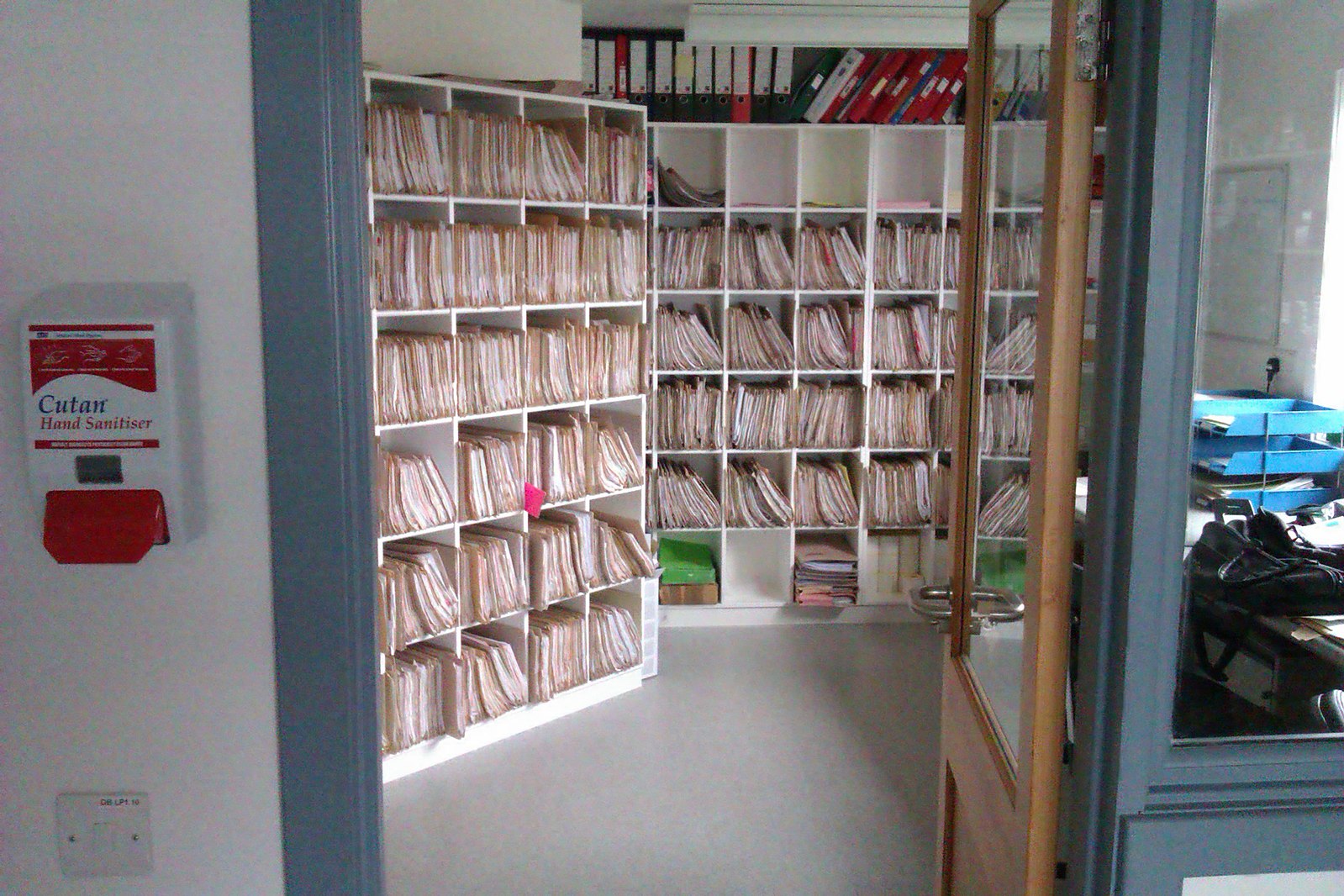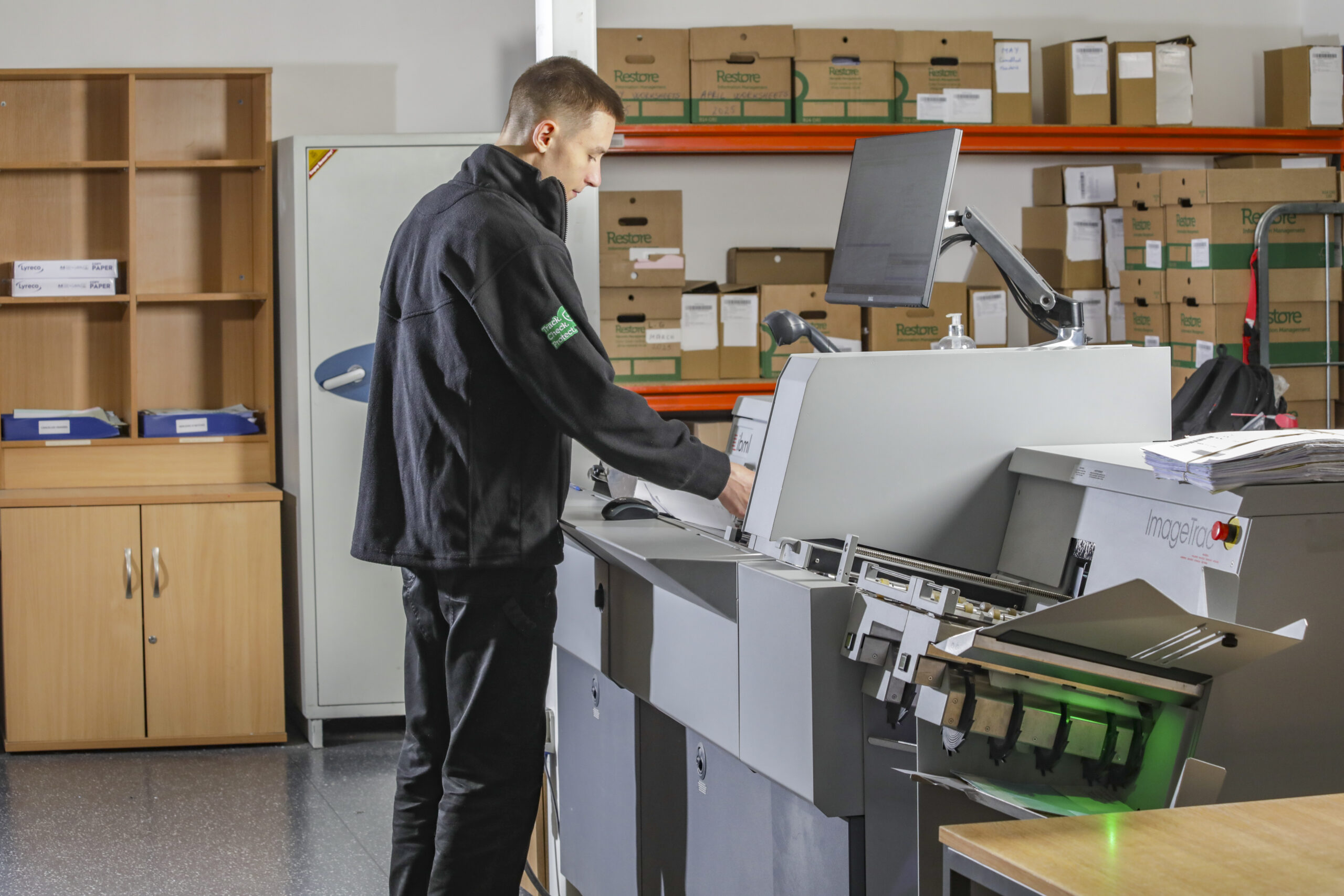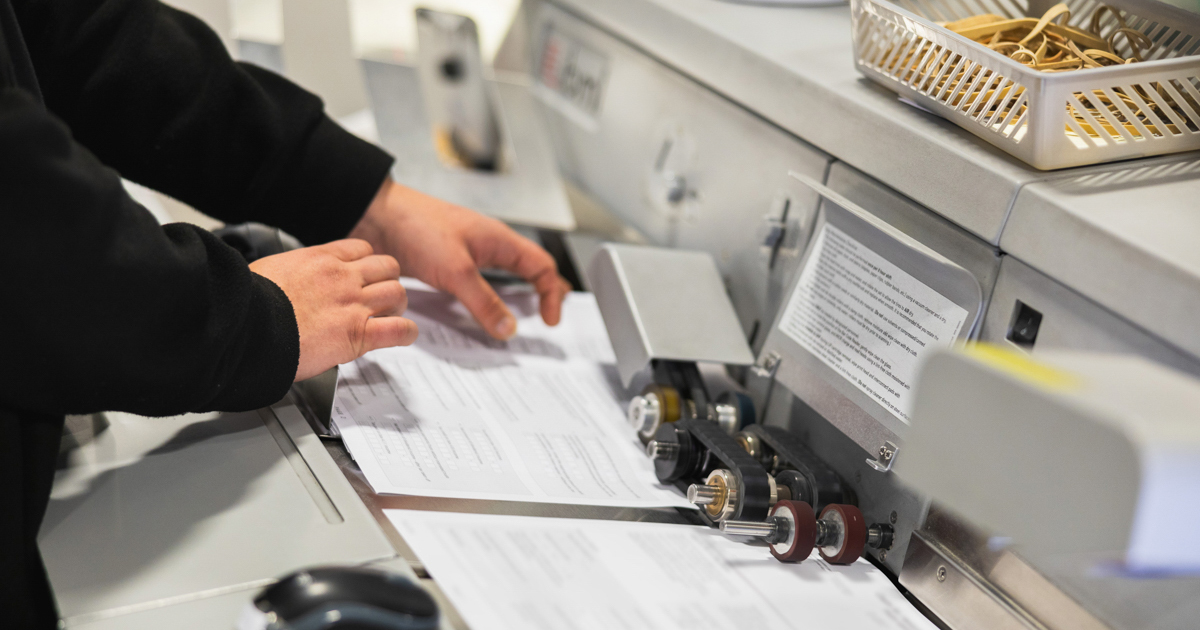Few types of medical records are as notable as Lloyd George records.
These small brown paper wallets, filled to the brim with handwritten notes, test results, and correspondence, have long been a staple of British healthcare. But as the NHS accelerates its shift to digital services, these paper relics can present challenges for modern practices.
Join us as we explore what Lloyd George records are, how they’ve traditionally been stored, and why digitisation is now more important than ever. We also outline the process involved, the benefits for practices and patients, and how Restore Information Management can help you take the leap into digital.

What is a Lloyd George record?
Simply put, a Lloyd George record is a paper-based medical file used primarily in general practices. Named after the former Prime Minister David Lloyd George, these records originated from his efforts to establish the foundations of a national health service in the early 20th century. The original purpose was to provide a standardised way to document a patient’s medical history.
Each Lloyd George envelope holds everything from handwritten doctor’s notes to specialist correspondence, medication records, and vaccination details. While these documents were revolutionary in their time, modern healthcare demands have far outgrown them.

In simple terms, the reference to “Lloyd George” on medical records signifies that the information is held in the traditional paper format. These records are often kept in envelopes bearing the Lloyd George name and are usually stored on-site at GP practices or in external archive facilities.

Most practices either house Lloyd George envelopes in on-site filing cabinets or send them off for secure archiving. Over the years, some have resorted to hiring shipping containers, basement cupboards, or overflow offices as makeshift storage areas. Not only does this take up space, but it can also lead to issues with accessibility, deterioration of documents, and even compliance risks. Paper files are vulnerable to water damage, fire, and physical decay, and they lack the searchability and speed of digital formats. Retrieval times can range from minutes to days, and the process is frequently laborious.

Digitising Lloyd George records offers an efficient, modern alternative to paper-based storage. In fact, NHS England has outlined a national strategy to digitise these records as part of its broader goal of streamlining healthcare delivery and improving outcomes. So in today’s context, Lloyd George records represent a logistical challenge, but also an opportunity for transformation.

Hybrid and paperlite solutions
That’s why a hybrid or “phygital” model has become a practical alternative. Instead of digitising all records upfront, practices can move Lloyd George records off-site into secure storage.
Off-site storage frees up valuable clinical space, avoiding the significant costs associated with expanding facilities, which can exceed £700 per square foot. Records are carefully indexed by NHS number or surname and stored in clearly labelled boxes.

Scan-on-demand
If a record is needed, it can either be retrieved physically or scanned on demand to an agreed specification. This “scan-on-demand” or “day-forward” approach provides quick, flexible access without the need for bulk digitisation.
Moreover, during intake, key metadata such as NHS numbers can be captured, creating a “digital-ready” state. This means practices can easily migrate to full digital records when funding or need arises, without the time and cost of re-indexing.
In this way, practices can manage costs, improve access, and prepare for a digital future, all while enjoying immediate space savings and operational efficiencies.
How does the process of digitising Lloyd George records work?
Initial consultation
Restore Information Management works closely with practice managers and Integrated Care Boards (ICBs) to understand their specific requirements and storage setup.

Collection and preparation
The physical files are securely collected from the site by vetted drivers. They are then sorted, cleaned and bar-coded so that files are fully trackable throughout the process.

Scanning and quality checks
High-speed medical-grade scanners convert paper records into digital files. Rigorous QC processes are then used to verify image clarity so no documents are missed.

Indexing
Metadata (such as NHS number, patient name, or GP code) is added to make retrieval simple and secure.

Secure upload
Digital files are uploaded into an EPR (Electronic Patient Record) system such as EMIS or SystmOne.

Return or destruction
Practices can choose to have their original records returned or securely shredded in line with BS EN 15713:2023 standards.


Practical steps to get started
- Audit your current records: Understand how many files you have, where they are, and what condition they’re in.
- Decide your objectives: Are you looking to free up space, improve compliance, or enhance patient service?
- Choose a trusted partner: Work with a provider like Restore Information Management who understands the sensitivity and complexity of medical records.
- Plan for integration: Make sure your chosen partner can upload files to your existing EPR system.

- Space saving: Free up rooms or facilities currently used for record storage.
- Faster access: Digital files can be retrieved instantly for improved response times.
- Better compliance: Stay aligned with GDPR, CQC inspections, and NHS England requirements.
- Reduced risk: Protect records from fire, flood, or unauthorised access.

- Continuity of care: Clinicians can access a full patient history at the point of care, helping them make better decisions and potentially spot patterns.
- Improved accuracy: Legible, searchable digital records reduce the chance of misinterpretation.
- Secure access: With appropriate systems, patients may be able to access their records online.

While the benefits of digitisation are clear, the path to implementation can come with its own set of difficulties. From managing large quantities of paper to ensuring accuracy and security during the transition, the process requires thoughtful planning and expert support. Here are some of the common hurdles and how to navigate them:
- Volume: The sheer number of files can be overwhelming, so working with a scalable provider is essential.
- Quality: Some documents may be delicate or poorly written. Fortunately, skilled technicians and advanced scanners can help recover hard-to-read files.
- Staff disruption: Practices worry about access during the scanning process. Restore Information Management offers a hybrid scanning option or staged collection to minimise disruption.
- Cost: While there is an upfront investment, the long-term savings in space, time, and compliance risks usually justify the cost. Hybrid solutions and scan-on-demand models can help spread costs more manageably over time.

- Start small: Pilot the process with a subset of records before full rollout. This allows you to identify potential challenges and refine workflows with minimal disruption.
- Involve your team: Engage admin staff and GPs in planning and workflow changes. Their input ensures that the solution is practical and supports day-to-day operations.
- Budget realistically: Factor in not just the cost of scanning, but also training, integration, and any temporary storage needs. A comprehensive budget helps avoid surprises and keeps the project on track.
- Stay compliant: Make sure your partner adheres to the Data Protection Act, GDPR, and NHS information governance requirements.

No longer simply a reference to paper records, it now represents a legacy system in transition. With digitisation, we move beyond the envelope and towards intelligent, searchable, compliant data systems that support both clinical work and patient wellbeing.

Successfully digitising Lloyd George records requires more than just the right technology, it demands experience, precision, and a deep understanding of NHS standards. At Restore Information Management, we’ve been trusted by thousands of NHS practices and Trusts to manage the transition from paper to digital. Here’s how we support you every step of the way:
- Specialist medical records scanning: We use high-resolution scanning equipment that preserves even fragile, handwritten notes.
- Secure chain of custody: From collection to upload, your records are monitored and tracked.
- Compliance expertise: We help you meet the requirements of the NHS England digitisation framework.
- Flexible service: Whether you need full scanning, partial digitisation, or just advice, we tailor our approach to your needs
- Post-digitisation storage: If you prefer to retain paper backups, we also provide secure records storage in climate-controlled facilities.
- Hybrid support: We offer scan-on-demand and digital-ready off-site storage solutions for practices not yet ready for full digitisation.
You can learn more or request a consultation on our dedicated GP records page: Restore GP Practices.
While the journey may seem complex, the rewards are significant:
With hybrid solutions now available, practices don’t have to choose between physical and digital, they can combine the best of both worlds. So what is a Lloyd George record in 2025? It’s a symbol of transformation. Learn more about how we help healthcare providers across the UK embrace digitisation.
